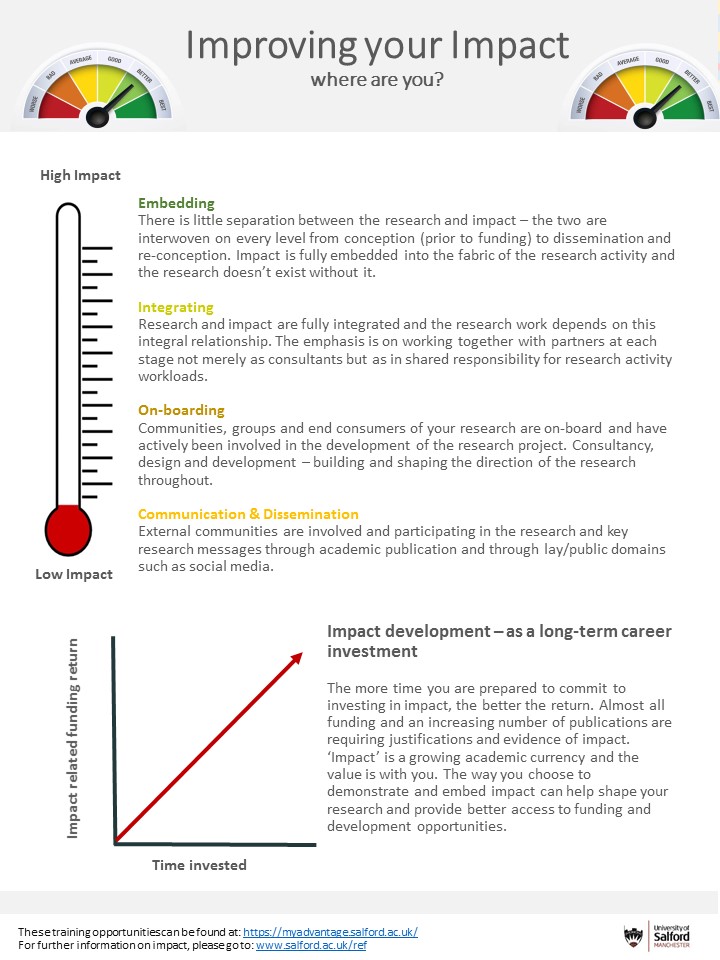If you are new to the idea of ‘research impact’ and want a good place to start, look at how you can connect with your publics via some form of public engagement. By disseminating your research more widely and engaging with a variety of different stakeholders you will be able to track whether your research is having a real-world impact.
Public engagement activity is what is known as a ‘pathway to impact’. This means that you can use this activity to generate some noise around your research and collect evidence from your stakeholders to show that they have used your research to benefit them in some way. This may be through changing their perceptions of something, changing their behaviour, or maybe even changing their practice as a result of something that they have seen or learnt about through your dissemination activities.
Some of the best resources that we have found for getting started with public engagement can be found below:
- Public engagement toolkits (National Coordinating Centre for Public Engagement – NCCPE): https://www.publicengagement.ac.uk/
- Fast Track Impact Blog – Evidencing Impacts from Public Engagement: http://www.fasttrackimpact.com/single-post/2017/11/23/Evidencing-impacts-from-public-engagement
- Research for All Journal Article: A Common Standard for the Evaluation of Public Engagement with Research (Reed et al., 2018): https://teamsite.salford.ac.uk/sites/sc02/REF2021/SitePages/Impact%20Evidence%20Collection.aspx

What is public engagement?
Public engagement is a term that is widely used in a variety of sectors, from arts and heritage to science policy and local government. Whilst in some sectors it has a precise definition, in others it is used more flexibly. The National Co-ordinating Centre for Public Engagement (NCCPE) has chosen to define public engagement broadly, to encompass the many and varied ways university staff and students engage with others outside the institution. There are a whole family of different types of engagement, for instance ‘civic’ or ‘community’ engagement, which are part of the same family.
NCCPE definition
“Public engagement describes the myriad of ways in which the activity and benefits of higher education and research can be shared with the public. Engagement is by definition a two-way process, involving interaction and listening, with the goal of generating mutual benefit.”
Mutual benefit is key to emphasising that high quality public engagement benefits all those involved. Benefits might include learning, developing new skills, gaining new insights or ideas, developing better research, raising aspiration, or being inspired.
What constitutes a public engagement activity?
Public engagement with research is wide-ranging and can include the following:
- Outreach
- Patient involvement
- Collaborative research
- Citizen science
- Participatory arts
- Lifelong learning
- Community engagement
- Engagement with partners.
If you have any questions or would like to explore this further, please contact Emma Sutton, Impact, Engagement & Environment Coordinator at research-impact@salford.ac.uk
Why not take this opportunity to check out the impact and public engagement resources available on our intranet site: https://www.salford.ac.uk/ref